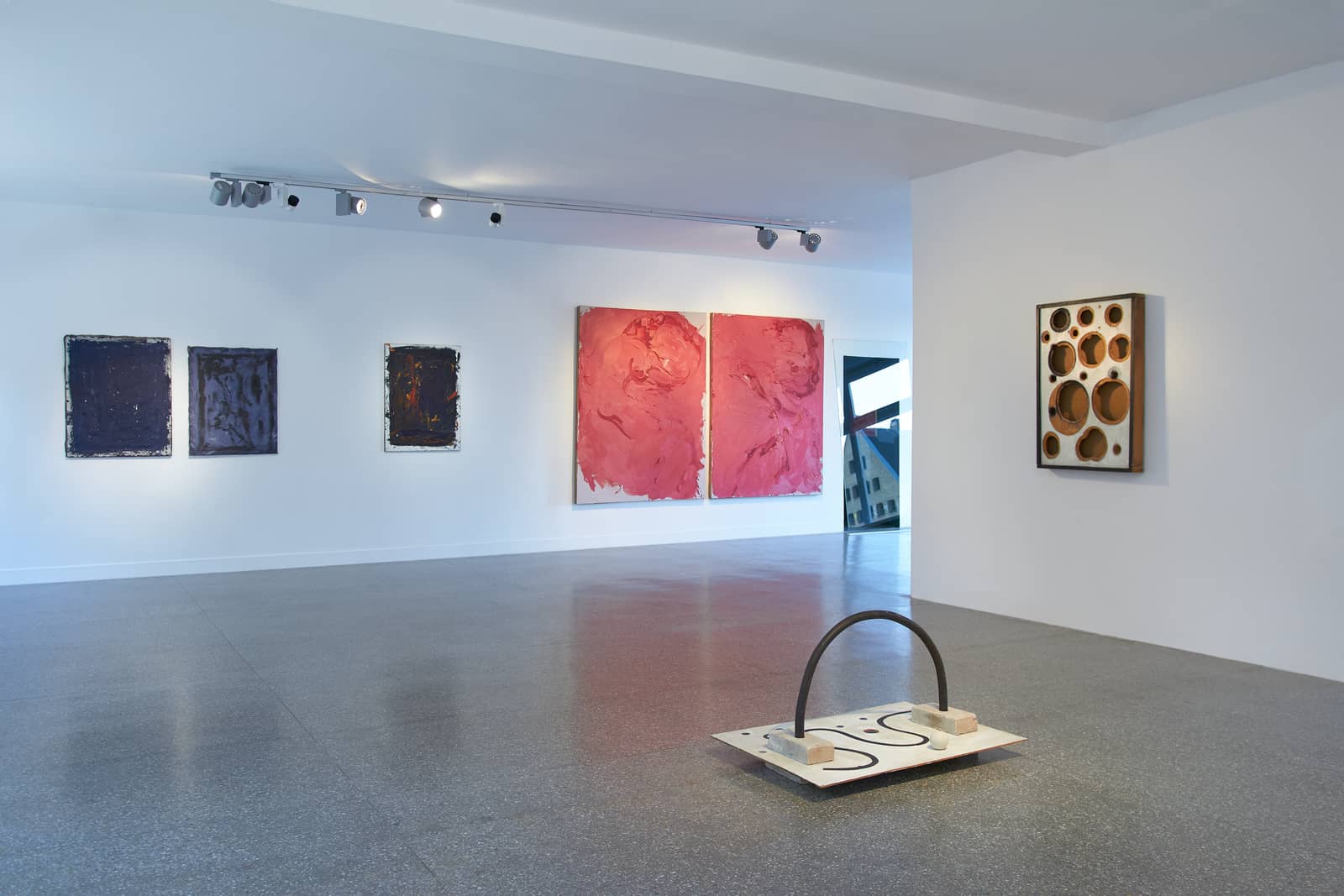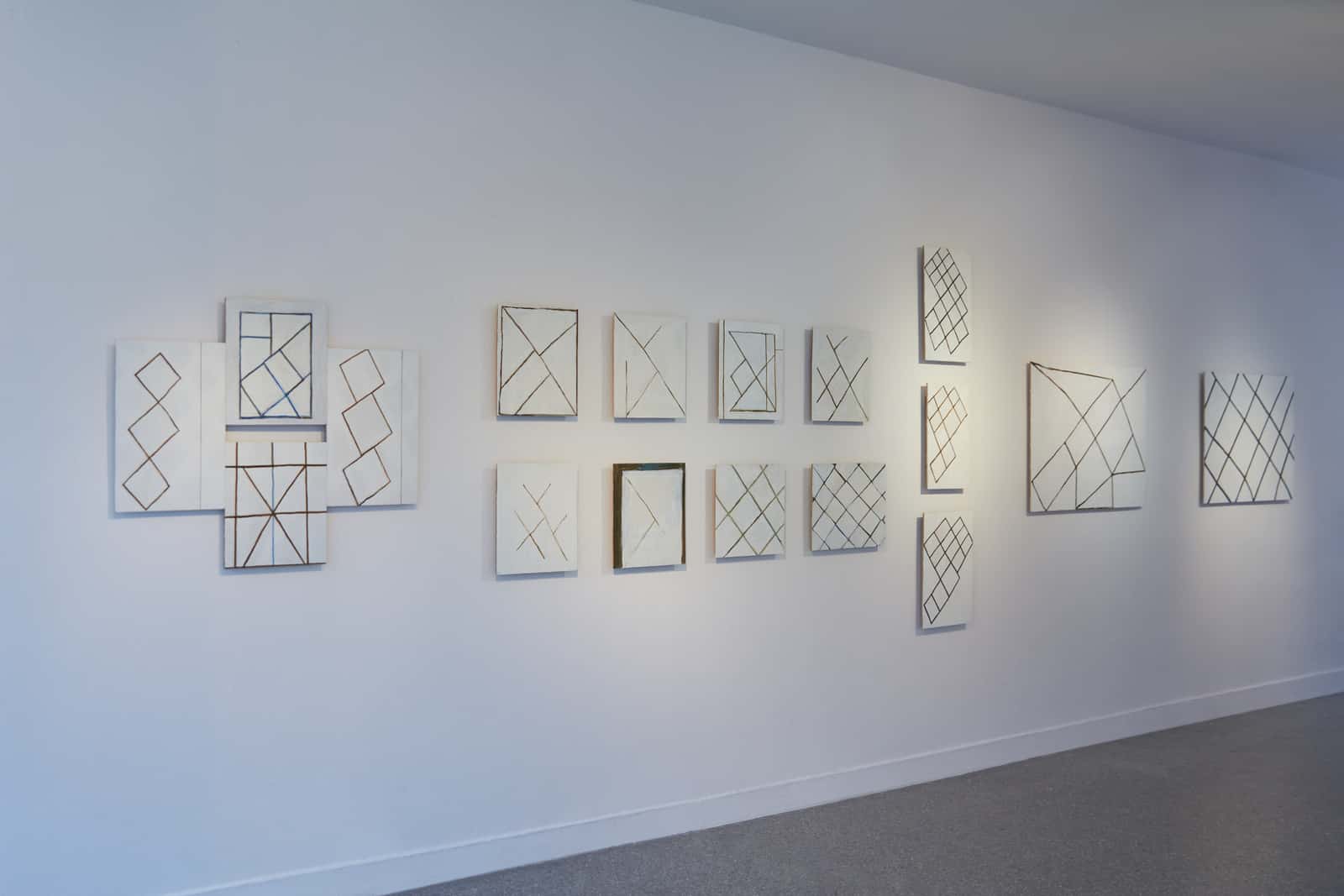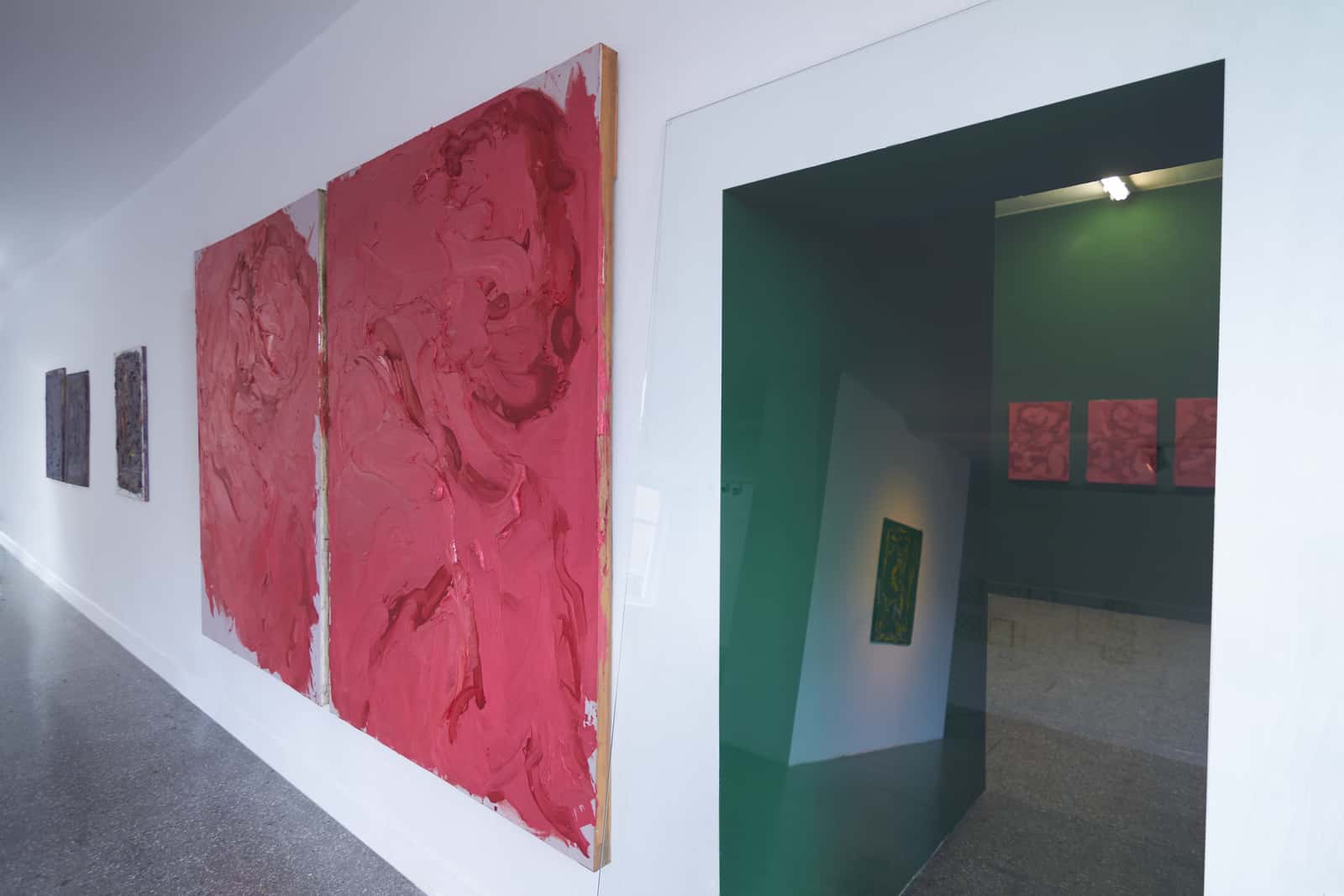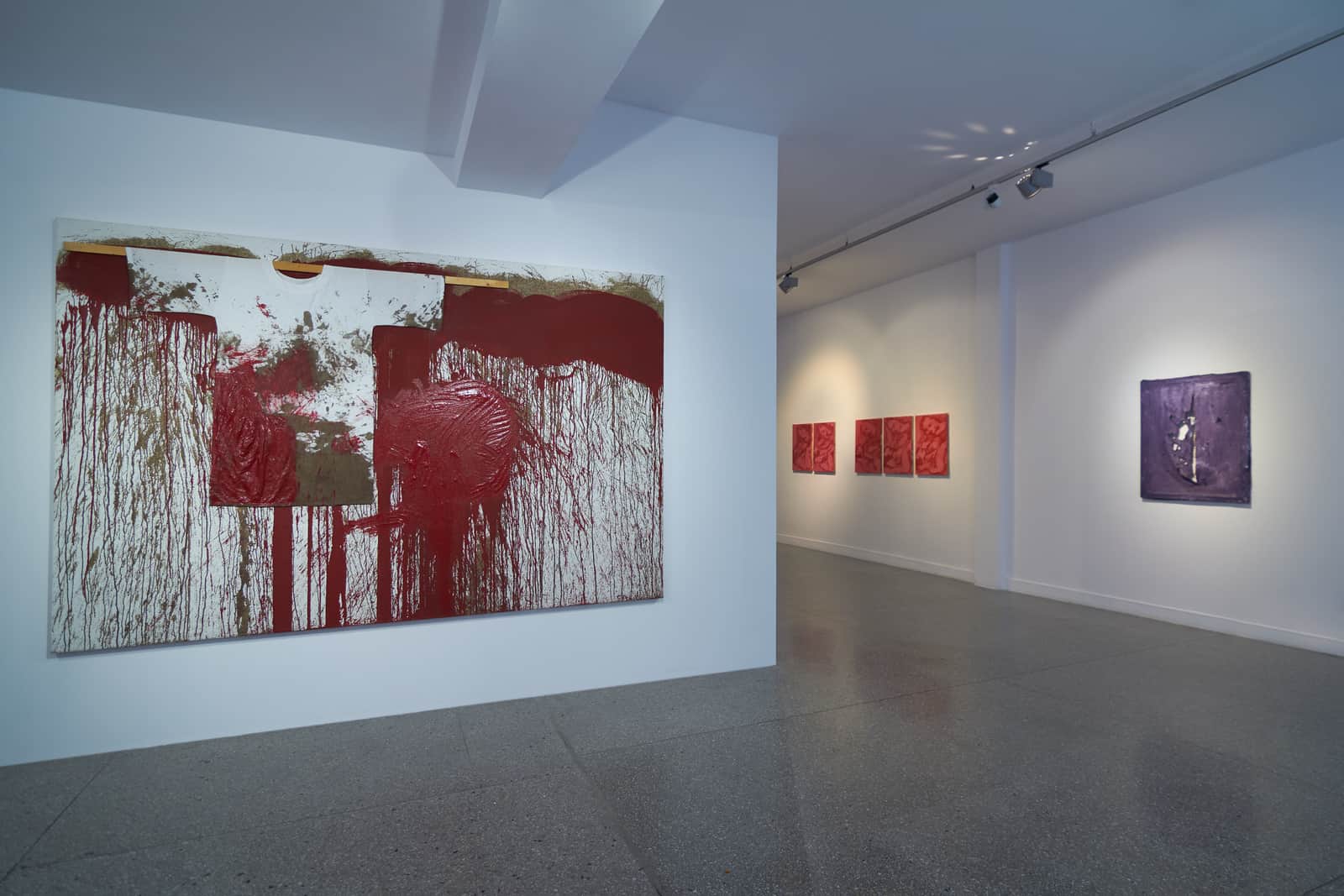From September 18th to November 14th, 2020, Gdansk City Gallery 2 provides an opportunity to view the exhibition Standing Aside, which includes works by Jaroslaw Bauć, Koji Kamoji, Hermann Nitsch and Jacek Sempoliński. The atmosphere of the exhibition, which the Nitsch Foundation is partnering with, is filled with deformation, trauma and the quest for stability.
The nature of the trauma is based on falling out of the symbolic order, since in a traumatic situation we are not able to know what happened and accept its meaning. Cultural scientist Cathy Caruth notes in her work that trauma has a specificity to continue in the bodies of the descendants of those who received it, becoming a collective experience. In view of its continuous escape from the representation, trauma cannot be presented and depicted, and therefore be present in the image itself as a sign. Its presence can only be detected as a kind of complementarity or non-symbolized remainder. The French philosopher Jean François Lyotard considers the purpose of contemporary art as the possibility to “see that there is something that can be thought about, but cannot be seen”.

‘Standing Aside’ exhibition, photo: Marcin Zdziuch
The artworks presented at the exhibition Standing Aside demonstrate that we are now standing on the ruins of the utopia of the past and force us to look closely at the structure of trauma. For example, Hermann Nitsch explores the power of art in the post-war world. His artwork “The Orgies Mysteries Theatre”, the video sequence of which is shown in one of the halls of Gdansk City Gallery 2, is based on the symbolic ritual of “the primary elements of life”: naked bodies of people, parts of bodies of slain animals, blood, white shirts. Hermann Nitsch emphasizes that the human subject is born in a gap with Mother Nature. “The Orgies Mysteries Theatre” plays out the essence of birth, death, divide and the power of art to cope with it.
Jaroslaw Bauc’s works explore trauma through the prism of deformity. By depicting cyclically the same image, the artist contributes to the emergence of an aesthetic opposition between a deformed object in a work of art and its optical image in the psyche of the subject, which arose on the basis of his personal visual experience. Thus, the viewer begins to approach the process of processing trauma with the help of all sorts of associative and creative processes in the psyche, starting the game with spiritual-visual images.

‘Standing Aside’ exhibition, photo: Marcin Zdziuch
For Jacek Sempolinski, traditional canvas becomes like a war, violently dealing with human bodies. Through dissecting and modifying the surface, the artist demonstrates the problems of internal logical dead ends and collisions of the familiar with the extraordinary, breaking human consciousness in a situation of rebuilding economic, educational and political structures and institutions. Jacek Sempolinski “opens” his space using a simple, but at the same time shocking technique – an elementary physical cutting of the canvas as a given.
At the Standing Aside exhibition, only Koji Kamoji’s art differs in that it does not embed trauma, but offers to look at it from the other side and accept it. His works are based on the construction of something new, taking into account the distance, texture, color, weight. By highlighting the things that we forget about in our everyday life, Koji brings us into a kind of Zen state in which we can get out of the traumatic experience.

‘Standing Aside’ exhibition, photo: Marcin Zdziuch
In his unfinished “Theses on the Philosophy of History”, the German philosopher Walter Benjamin interprets Paul Klee’s “Angelus Novus” as an image of the Angel of History facing the ruins of the past. The philosopher emphasizes that the past carries with it a secret sign through which it points to the liberation. At Standing Aside, Jaroslaw Bauć, Koji Kamoji, Hermann Nitch, Jacek Sempoliński look closely at every bit of history, showing what trauma is based on and how to find a way to release it.
Hungry for more?













